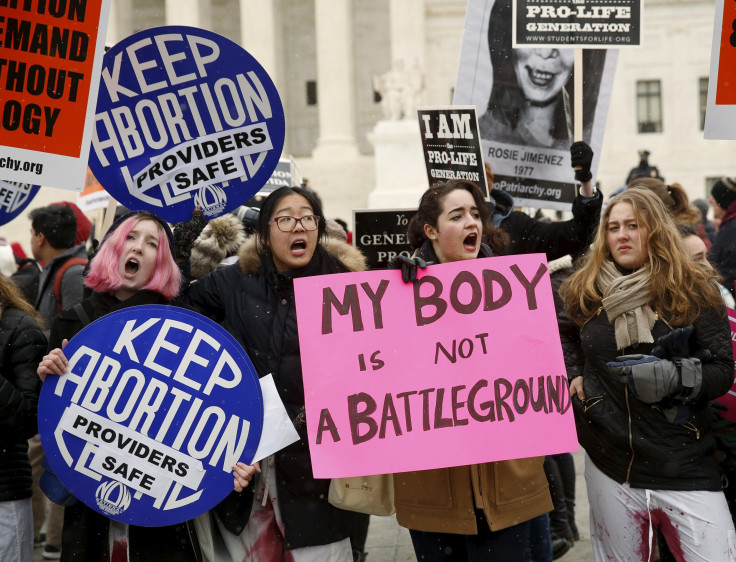Roe v. Wade Anniversary 2017: Everything You Need To Know About The 1973 Court Case

Forty-four years after the Supreme Court ruled in Roe v. Wade that laws banning abortion invaded a woman’s privacy, a president who said in March that women should be punished for abortions is entering the White House, with an empty seat on the very same court to fill.
Read on for a lowdown of the landmark Jan. 22, 1973 decision, including how likely it is to be overturned in the next four years.
The Plaintiff
Norma McCorvey took the pseudonym “Jane Roe” when she challenged the constitutionality of abortion laws in her home state of Texas with what later became a class action suit in 1970.
Pregnant with her third child — her mother had kidnapped the first after kicking her out of the house when McCorvey came out as gay, and she gave her second up for adoption — and in her early 20s, McCorvey began consulting lawyers when she couldn’t find a doctor within a reasonable distance to perform an abortion. (By 1971, the practice was legal only in six states and the District of Columbia.)
The Defendant
Wade, who served as Dallas district attorney for nearly four decades, had a “folksy manner” that “masked a keen legal mind, a fiercely competitive streak and a relentless faith in the efficacy of punishment,” as a 2001 New York Times obituary put it.
Wade stood as somewhat of a proxy for the real target of McCorvey’s suit: five articles of the Texas Penal Code that banned abortion, or aiding an abortion, with the exception of cases in which the mother’s life was endangered.
The Decision
After the Dallas district court found the state law banning abortion unconstitutional based on a violation of the Ninth Amendment, the Supreme Court cited the Due Process Clause of the 14th Amendment as a basis for unconstitutionality in a 7-2 ruling that came about 2 1/2 years after that of the Texas court.
What It Means
The Supreme Court’s loose interpretation of the Due Process Clause — which states that the government cannot “deprive any person of life, liberty or property without due process of the law” — gave the definition of the clause a new meaning, effectively preventing the state from interfering in women’s decisions regarding their maternal health.
The Criticism
Aside from outright critics of abortion, many, including Justice Ruth Bader Ginsburg, have assailed the ruling as having little concern for women’s rights.
“It’s about the doctor’s freedom to practice his profession as he thinks best,” Ginsberg said in a University of Chicago Law School speech on the ruling on its 40th anniversary in 2013. “If you read the Roe opinion, you will never see the woman standing alone. It’s always the woman in consultation with her physician.”
The Likelihood It’ll Be Overturned
With an ideologically divided Supreme Court and the late Justice Antonin Scalia’s seat still vacant, many worry that the landmark decision could be overturned with the appointment of a new, far-right-leaning judge. But as legal experts told FiveThirtyEight in November, overturning a ruling used as precedent for, as of Sunday, 44 years would be extraordinarily difficult, especially since the Supreme Court ruled 5-3 just last June in Whole Woman’s Health v. Hellerstedt that a more recent Texas law was too much of a “substantial obstacle” for women seeking abortions in the state.
© Copyright IBTimes 2024. All rights reserved.






















